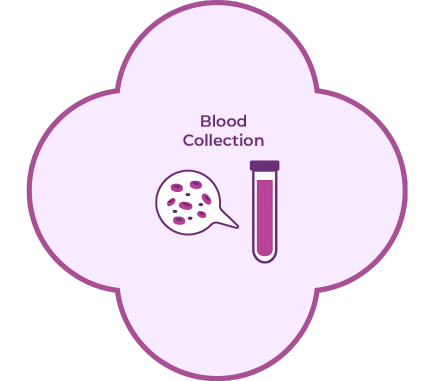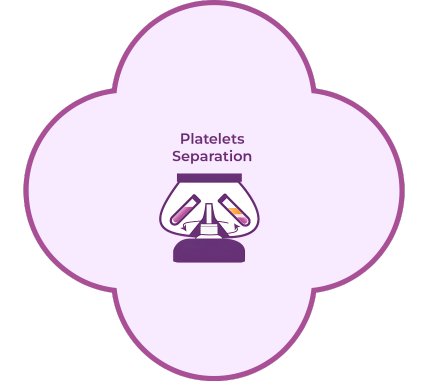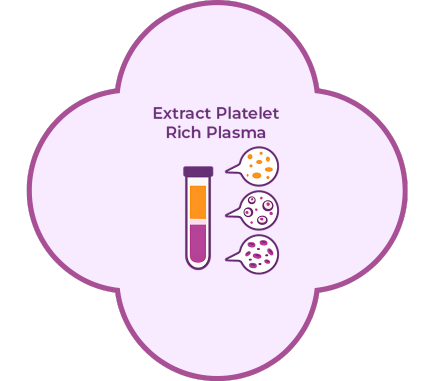PRP For Fertility
Platelet-Rich Plasma (PRP) Treatment To Revitalize Your Fertility
PRP For Fertility
Platelet-Rich Plasma (PRP) Treatment To Revitalize Your Fertility
PRP For Fertility
Platelet-Rich Plasma (PRP) Treatment To Revitalize Your Fertility
PRP TREATMENT AND IVF
Platelet-Rich Plasma (PRP), which is a concentrated solution of growth factors and cytokines taken from a sample of your blood, is used in various fertility treatments, including In Vitro Fertilization (IVF) and Intrauterine Insemination (IUI).
PRP technology has varied uses in modern medicine, ranging from healing sports injuries to treating hair loss. We at New Hope Fertility Center, are using PRP technology to help our patients improve their egg quantity and quality, to thicken their uterine lining, and to enhance their endometrial receptivity during an embryo transfer, among other things.
PRP treatment is particularly beneficial to those who have undergone multiple IVF cycles and experienced recurrent implantation failure – that is, when several high-quality embryos are transferred on different occasions and yet no pregnancy results. PRP may also be useful for women who struggle to produce healthy eggs since PRP injections help stimulate your existing stem cells to produce better-quality eggs.
WHAT IS PLATELET-RICH PLASMA (PRP)?
Platelet-Rich Plasma (PRP) is a concentrated solution of growth factors and cytokines taken from a sample of your own blood. When introduced into the ovaries and uterine cavity, PRP stimulates cellular rejuvenation and blood flow, naturally and effectively enhancing your own fertility.
PRP treatment starts by drawing a sample of your blood. The blood is then placed in a centrifuge for about 15 minutes. This machine spins so quickly that it causes the different blood components to separate. The plasma – which is now rich in platelets that help stimulate tissue growth – is collected in preparation for an ovarian injection or a uterine infusion.
If you are considering PRP for infertility, it is important to know the difference between the two methods of PRP administration so that you and your fertility doctor can decide on the option that better suits your needs and unique situation. The cost also differs.
OVARIAN PRP
As females age, the quality and quantity of their eggs decrease over time. Ovarian Rejuvenation is a treatment add-on that has been shown to increase egg quality and quantity in women that suffer from a low ovarian reserve. The process works by injecting Platelet-Rich Plasma (PRP) directly into your ovaries to stimulate your existing stem cells to produce better-quality eggs.
Ovarian rejuvenation using PRP is typically recommended for IVF patients who have had one or more failed cycles, as well as for those who are dealing with more general infertility related to first or secondary pregnancy. It can help increase egg quality and quantity, leading to an improved chance of fertilization during subsequent cycles.
Ovarian PRP is best suited for you if:

You tried to conceive for 6 to 12 months without success

You have had several miscarriages

You have been diagnosed with secondary infertility

You have had a failed IVF cycle due to egg or embryo quality
UTERINE PRP
A person who has secondary infertility or recurring miscarriages may suffer from a thin endometrial lining, which impacts embryo implantation. Uterine infusion is a treatment add-on that has been shown to increase implantation rates and endometrial lining thickness.
The process works by injecting Platelet-Rich Plasma (PRP) directly into your uterus to stimulate your existing stem cells to produce a potentially thicker endometrial lining. Thicker endometrial lining will better support implantation and will create a more habitable environment for the embryo.
Uterine PRP is best suited for you if:

You suffer from a thin endometrial lining

You have had several miscarriages

You have recurrent implantation failures
THE BENEFITS OF PRP TREATMENT
As previously mentioned, PRP treatment for Ovarian Rejuvenation can help women who experienced failed embryo transfer, women with recurrent implantation failure, or women who have thin endometrial lining. It can also benefit women who are struggling to conceive due to very low ovarian reserve, women who experience early menopause, and women who have poor quality and/or quantity of eggs.
One recent study involving 510 women with Poor Ovarian Response (POR) and average age of 40.3 has found that PRP treatments resulted in a pregnancy rate of 20.5% and sustained implantation/live birth rate of 12.9%. Among these women, 312 (65.8%) who attempted IVF after PRP treatment generated embryos and underwent embryo transfer, 83 (17.5%) achieved a pregnancy, and 54 (11.4%) achieved sustained implantation/live birth.
PRP FOR FERTILITY STEP-BY-STEP

Step 1:
Blood Collection
To begin the PRP treatment, a phlebotomist will obtain a blood sample from your forearm.

Step 2:
Platelets Separation
The blood sample will be placed in a centrifuge for 10-15 minutes to separate the plasma (PRP) from the red and white blood cells.

Step 3:
PRP Injection
The PRP will be transferred to a syringe and injected into your ovaries or uterus in a minimally invasive procedure.
TREATMENT PRICING
Select “Ovarian PRP” or “Uterine PRP” in the price simulator below
